Serving 417 students in grades Prekindergarten-6, Franklin Elementary School ranks in the top 20% of all schools in Washington for overall test scores (math proficiency is top 20%, and reading proficiency is top 20%).
The percentage of students achieving proficiency in math is 59% (which is higher than the Washington state average of 40%). The percentage of students achieving proficiency in reading/language arts is 67% (which is higher than the Washington state average of 53%).
The student:teacher ratio of 13:1 is lower than the Washington state level of 16:1.
Minority enrollment is 30% of the student body (majority Hispanic), which is lower than the Washington state average of 52% (majority Hispanic).
Quick Stats (2025)
- Grades: Prekindergarten-6
- Enrollment: 417 students
- Student:Teacher Ratio: 13:1
- Minority Enrollment: 30%
- Overall Testing Rank: Top 20% in WA
- Math Proficiency: 59% (Top 20%)
- Reading Proficiency: 67% (Top 30%)
- Science Proficiency: 50-59% (Top 50%)
- Source: National Center for Education Statistics (NCES), WA Dept. of Education
Top Rankings
Franklin Elementary School ranks among the top 20% of public schools in Washington for:
Category
Attribute
Overall Rank
Math Proficiency
Student Attention
School Overview
Franklin Elementary School's student population of 417 students has stayed relatively flat over five school years.
The teacher population of 32 teachers has grown by 18% over five school years.
Grades Offered
Grades Prekindergarten-6
Total Students
417 students
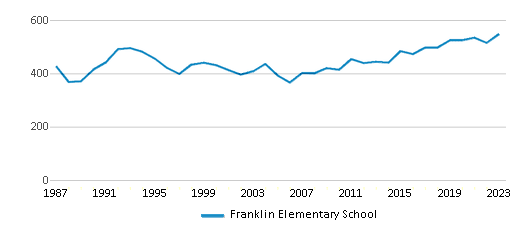
Gender %
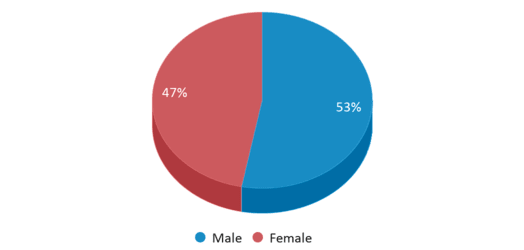
Total Classroom Teachers
32 teachers
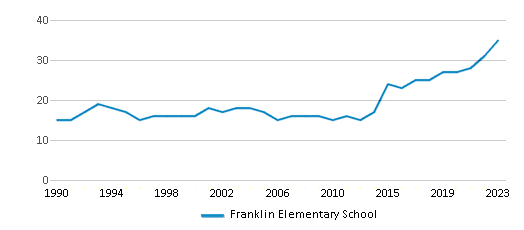
Students by Grade
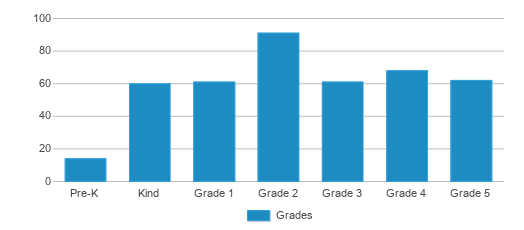
School Rankings
Franklin Elementary School ranks within the top 20% of all 2,113 schools in Washington (based off of combined math and reading proficiency testing data).
The diversity score of Franklin Elementary School is 0.48, which is less than the diversity score at state average of 0.69. The school's diversity has stayed relatively flat over five school years.
Overall Testing Rank
#354 out of 2113 schools
(Top 20%)
(Top 20%)

Math Test Scores (% Proficient)
59%
40%
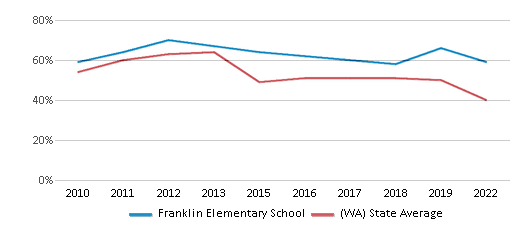
Reading/Language Arts Test Scores (% Proficient)
67%
53%
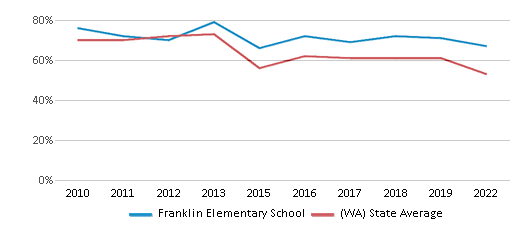
Science Test Scores (% Proficient)
50-59%
49%
Student : Teacher Ratio
13:1
16:1
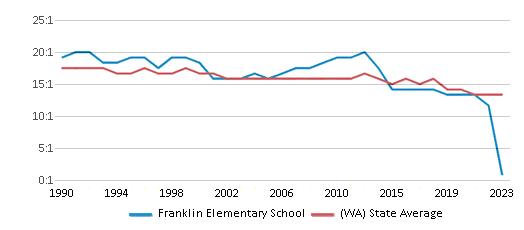
American Indian
n/a
1%
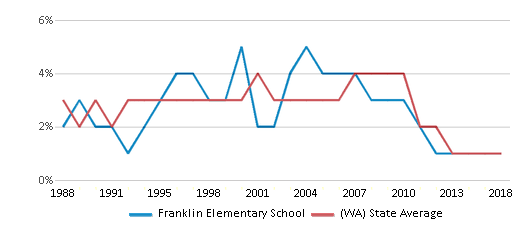
Asian
3%
9%
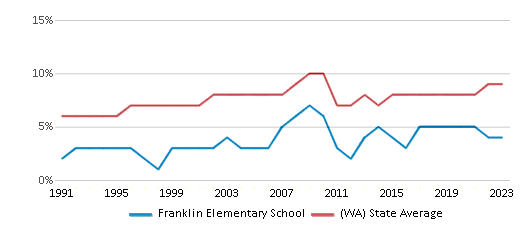
Hispanic
9%
26%
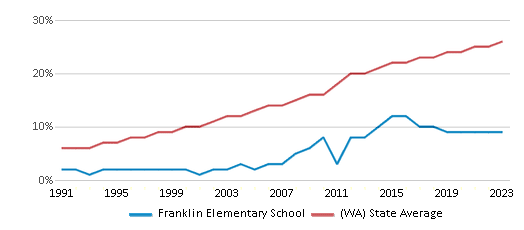
Black
4%
5%
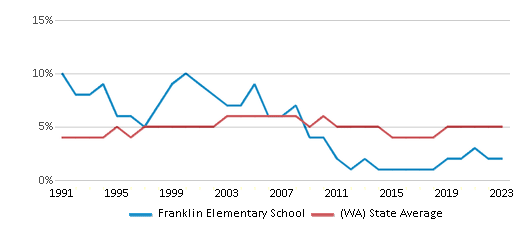
White
70%
48%
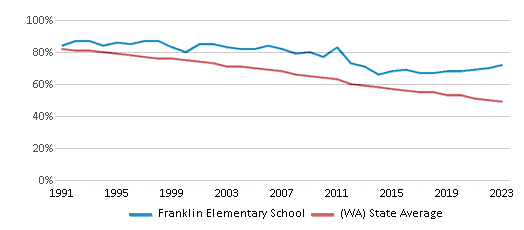
Hawaiian
n/a
2%
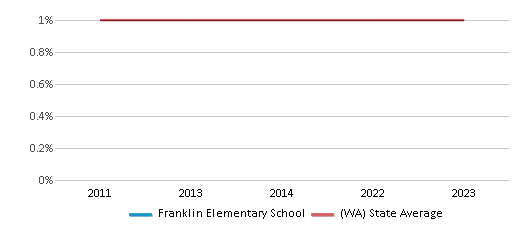
Two or more races
14%
9%
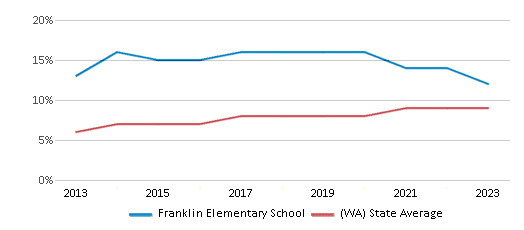
All Ethnic Groups
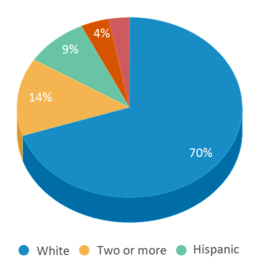
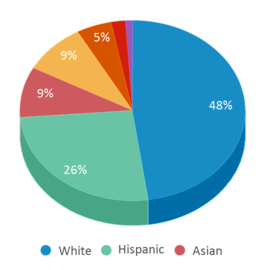
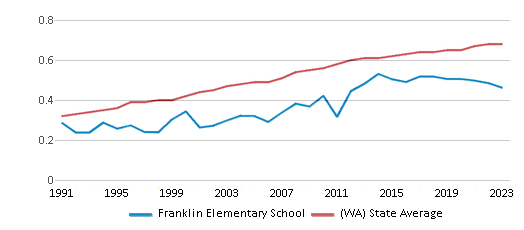
Eligible for Free Lunch
53%
49%
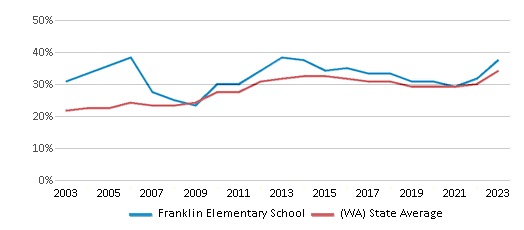
Eligible for Reduced Lunch
7%
8%
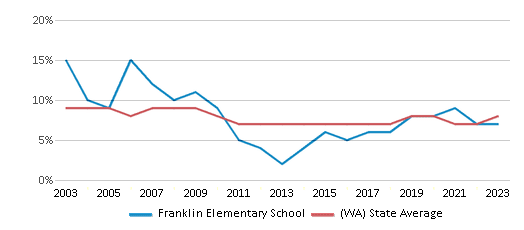
School Statewide Testing
School District Name
Source: National Center for Education Statistics (NCES), WA Dept. of Education
Profile last updated: 02/09/2025
Frequently Asked Questions
What is Franklin Elementary School's ranking?
Franklin Elementary School is ranked #354 out of 2,113 schools, which ranks it among the top 20% of public schools in Washington.
What schools are Franklin Elementary School often compared to?
Franklin Elementary Schoolis often viewed alongside schools like Mullan Road Elementary School, Frances Scott Elementary School by visitors of our site.
What percent of students have achieved state testing proficiency in math and reading?
59% of students have achieved math proficiency (compared to the 40% WA state average), while 67% of students have achieved reading proficiency (compared to the 53% WA state average).
How many students attend Franklin Elementary School?
417 students attend Franklin Elementary School.
What is the racial composition of the student body?
70% of Franklin Elementary School students are White, 14% of students are Two or more races, 9% of students are Hispanic, 4% of students are Black, and 3% of students are Asian.
What is the student:teacher ratio of Franklin Elementary School?
Franklin Elementary School has a student ration of 13:1, which is lower than the Washington state average of 16:1.
What grades does Franklin Elementary School offer ?
Franklin Elementary School offers enrollment in grades Prekindergarten-6
What school district is Franklin Elementary School part of?
Franklin Elementary School is part of Spokane School District.
In what neighborhood is Franklin Elementary School located?
Franklin Elementary School is located in the Lincoln Heights neighborhood of Spokane, WA. There are 3 other public schools located in Lincoln Heights.
School Reviews
2 4/27/2015
My daughter does not like this school. Not because of the students but the teachers. The teachers seem angry and burned out. They are sarcastic and rude to students. I did not like how they only speak to other adults even when asking a question of the student. My daughter breaks down crying when she gets home to safety, and is now having nightmares since attending this school. Every day she finds an illness so she doesn't have to go. We are looking into homeschool and any other options. Children deserve better. Please don't send your child here.
Review Franklin Elementary School. Reviews should be a few sentences in length. Please include any comments on:
- Quality of academic programs, teachers, and facilities
- Availability of music, art, sports and other extracurricular activities
Recent Articles

What Is A Charter School?
Explore the world of charter schools in this comprehensive guide. Learn about their history, how they operate, and the pros and cons of this educational innovation. Discover key facts about charter schools, including admission policies, demographics, and funding, as well as what to look for when considering a charter school for your child.

10 Reasons Why High School Sports Benefit Students
Discover the 10 compelling reasons why high school sports are beneficial for students. This comprehensive article explores how athletics enhance academic performance, foster personal growth, and develop crucial life skills. From improved fitness and time management to leadership development and community representation, learn why participating in high school sports can be a game-changer for students' overall success and well-being.

February 05, 2025
Understanding the U.S. Department of Education: Structure, Impact, and EvolutionWe explore how the Department of Education shapes American education, from its cabinet-level leadership to its impact on millions of students, written for general audiences seeking clarity on this vital institution.





